
 |
||||
| home > projects | ||||
CRP-1 Circular Sliderule
No doubt you've already tried the wind up, wind down and jiggle method and are now thoroughly confused. I was shown a different method by my instructor at the time. I don't suppose he worked it out but I'll call it the 'Padfield method'.
This method appears to be just as accurate (better than my flying anyway). It's logical, simple and quick so why isn't it in the books?
The Padfield Method for Calculating Headings
I doubt you left the device set to zero, so do that first. Move the slide until the blue circle aligns with the zero mark. (told you it was easy).
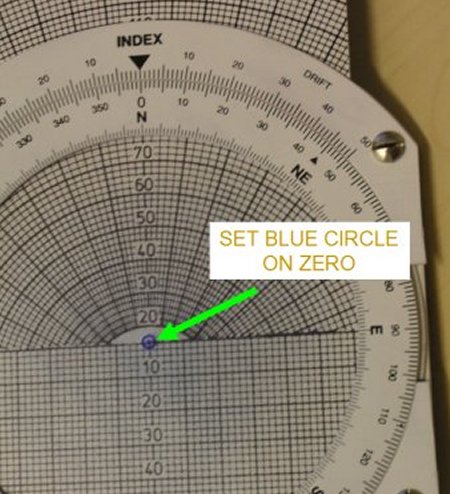
Well, you want to work out the effects of the wind, so it seems obvious to set the wind direction first. For this example we'll use a wind from 230 degrees.
Rotate the dial until the given wind direction is set just below the index mark triangle.
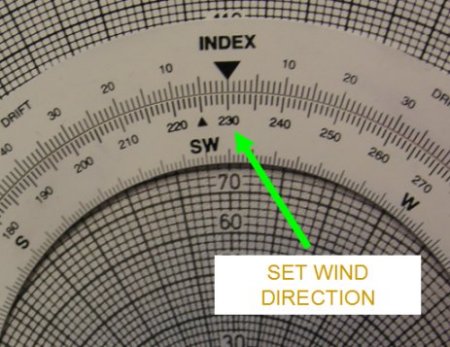
Now draw a pencil line vertically down from the zero circle until
it reaches the correct wind speed on the horizontal scale.
Maybe put a little cross at the end of this line because it's the most important
point.
(It's worth noting that if you're calculating multiple legs you don't have to
do this bit every time). Here we're using a wind strength of 25 knots.
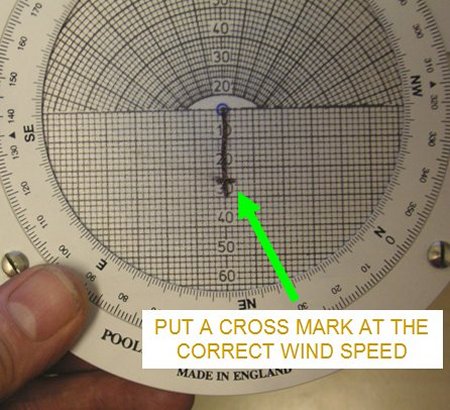
Now for the clever bit, rotate the dial until the desired track is aligned with the index mark triangle. We're using a track of 340 degrees.
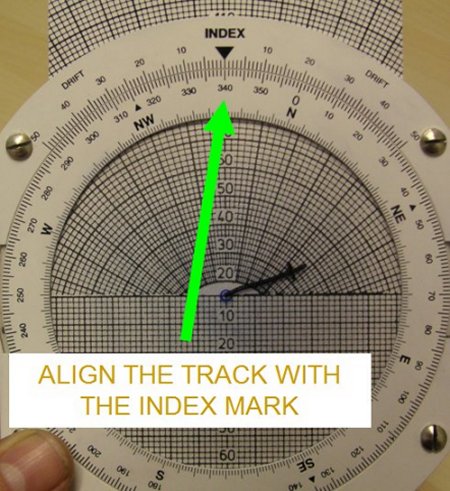
If the little cross you made is now above the wind speed scale, as it is here, move the slide up until it's somewhere on the bottom scale again, you'll need it next.
Draw a vertical line down from the little cross for about 25mm, the length is not important but it must be vertical so use the slide scale as a guide.
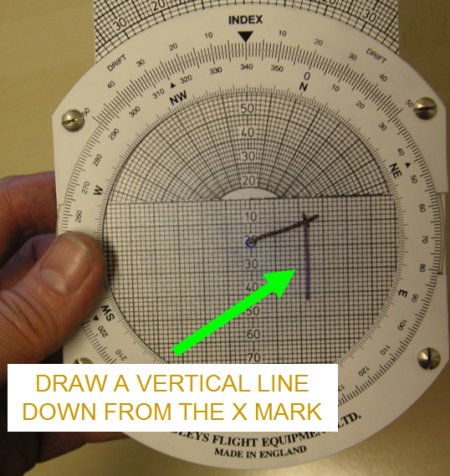
Move the slide down until the blue zero circle is aligned with your airspeed. 90 knots in this case.
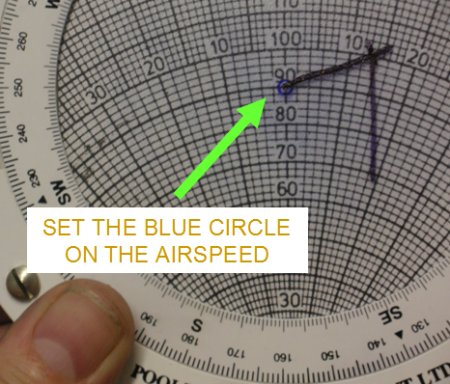
Rotate the dial until the vertical line you drew is parallel to one of the radial fan lines.
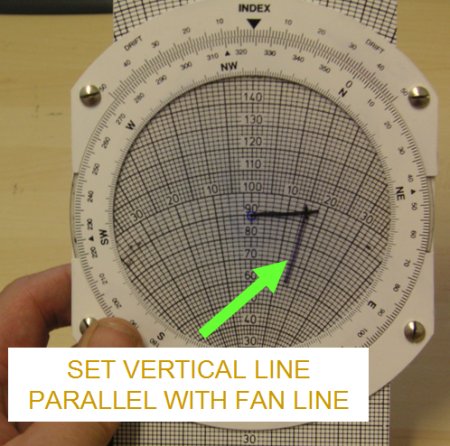
Read off your heading from the index mark triangle. 324.5 degrees.
Read off the ground speed from the little cross. 95 knots.
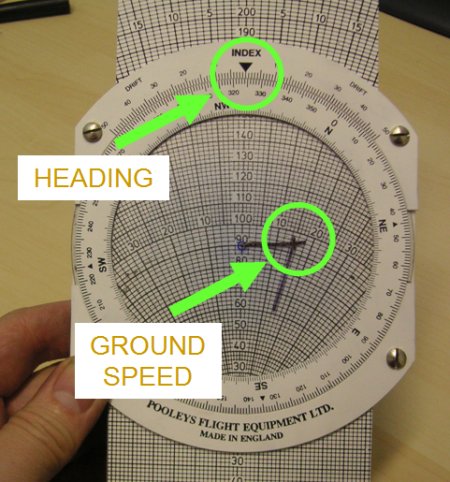
Don't forget to allow for magnetic variation, add it on if you're in the west.
Actually, that's quicker than booting up the PC or entering data in the GPS, isn't it?
home • inspiration • motorcycles • brakes • caravans • robotwars • flying • cars • projects • links • sitemap
E-mail: web@thewombles.net
© Splash_Womble